Diana Wyatt and Craig Campbell live in a 1997-built family home located in the greater Kingston area. In spring 2022, Campbell and Wyatt undertook a deep energy retrofit that dropped their home’s energy use from the grid by 100 GJ — an 84 per cent reduction in energy consumption! The couple now enjoy a comfortable and nearly carbon-free home.
Read on to find out more about their home energy retrofit.
The Home Retrofit Journey
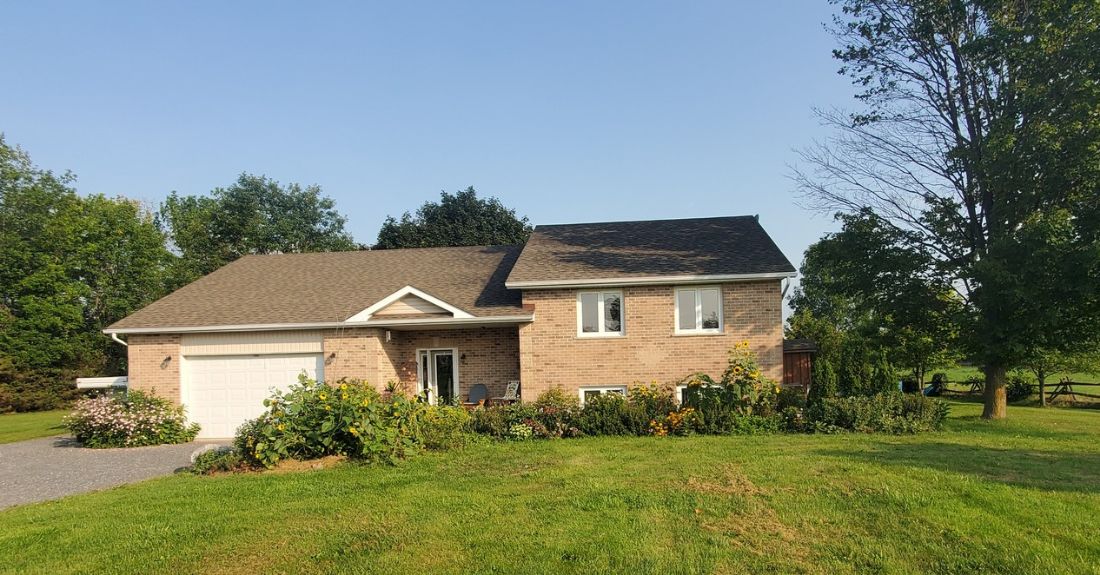
The house before retrofit
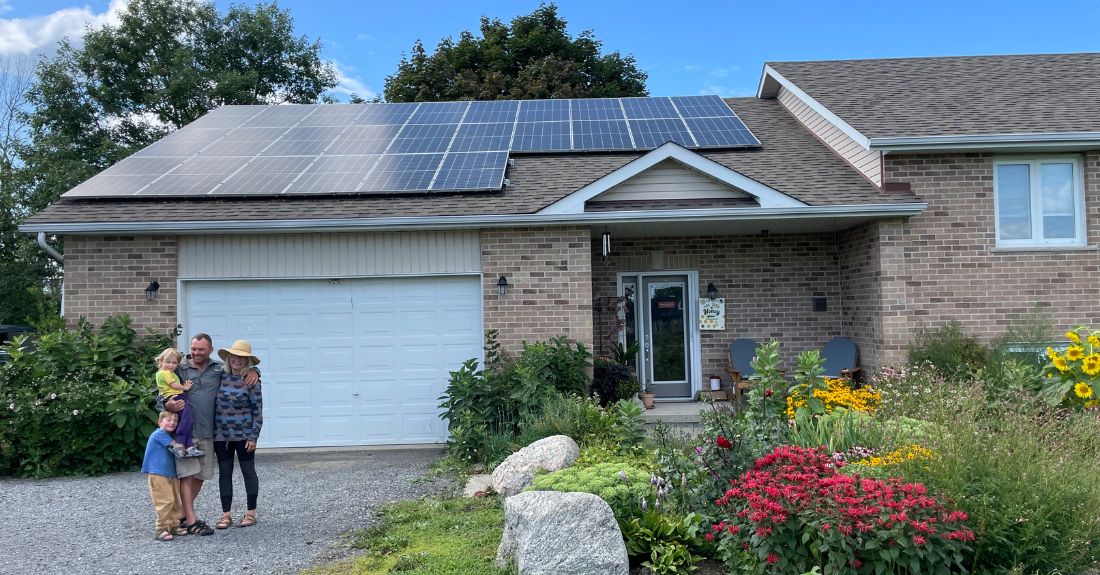
The house after retrofit
Wyatt received a flyer in the mail about the $5,000 rebate through the Canada Greener Homes Grant and got on the Natural Resources Canada website to find a registered energy advisor. “I was looking for somebody who would be from here. A list from the Greener Homes website is what led me to Red Squirrel,” Wyatt said.
Sam Carlstrom from Red Squirrel (now merged with Sustainable Kingston) made the first visit to conduct an EnerGuide home energy evaluation on August 24th, 2021. Carlstrom set up the blower door fan test, and checked for air-leaks and insulation levels.
“Sam said that there was one pipe leaving that house that had a gap around it and a room that needed weather-stripping around the door and that was it.” The homeowner was pleasantly surprised to hear from the advisor that the windows, insulation, and draft-proofing were still quite adequate.
Considering the house’s good insulation, the couple decided to use the federal grant to subsidize the cost of mechanical upgrades and installation of a solar photovoltaic system to improve their home’s energy efficiency.
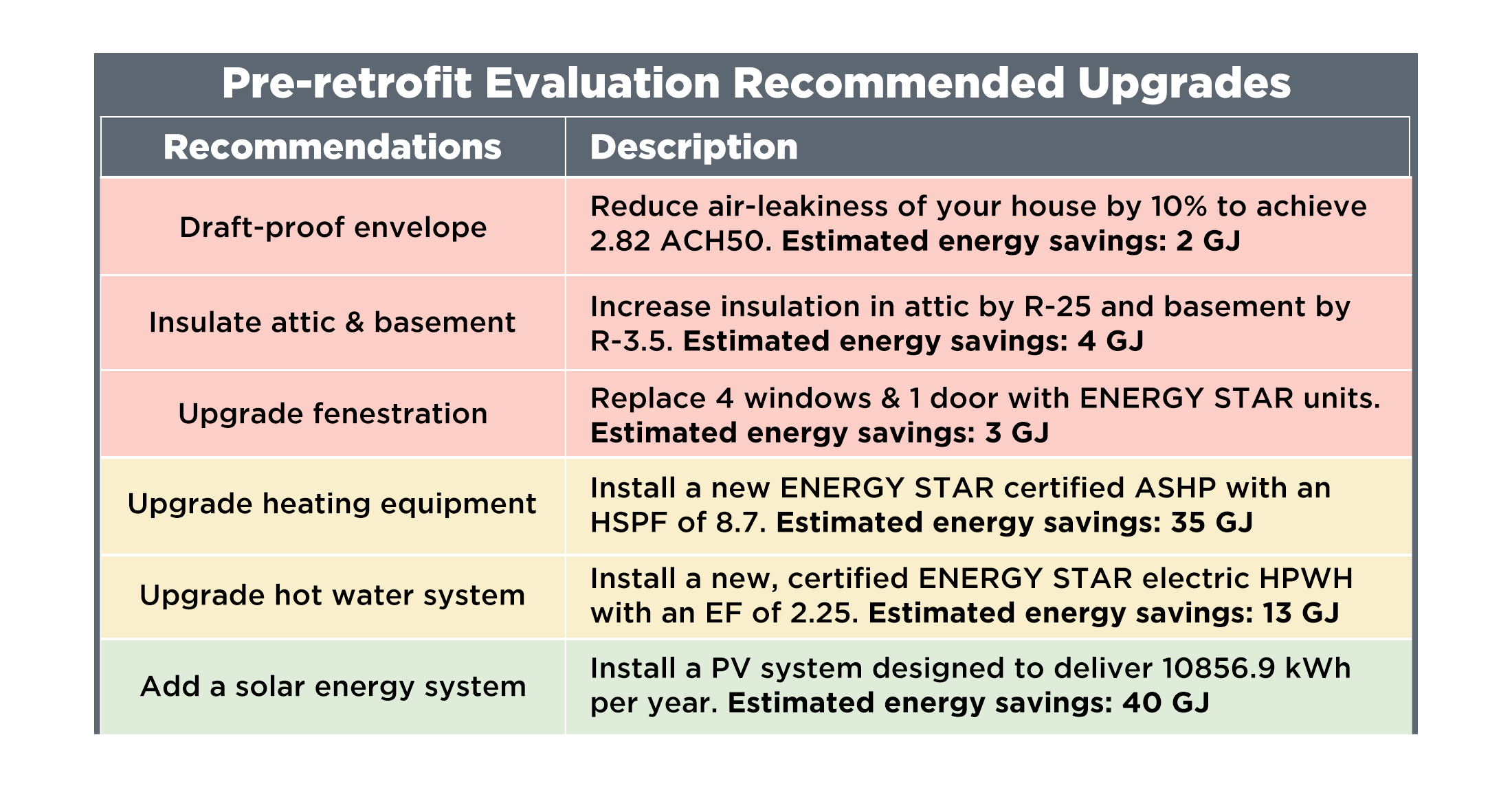
The Deep Energy Retrofit
The first thing Wyatt and Campbell did after the pre-retrofit evaluation was contact Quantum Renewable Energy to add solar panels to their roof.
A representative from the company visited their house in August 2021 and did an assessment of the home’s readiness for solar panels. After checking if the roof could support the added weight, the company representative informed the couple that an installation could be scheduled for March 2022.
“Quantum looks at how much electricity you’re using now, and what you expect to use in the future. I told them that we currently have a propane dryer, propane hot water, and a propane furnace but my intention, eventually, was to switch to electric so they’d be using solar. Another aim, at some point, is that the car would be electric. So, Quantum looked at the prospective plan to account for all the kilowatt usage where they would then factor it all in and zero it out for net-metering,” Wyatt explained.
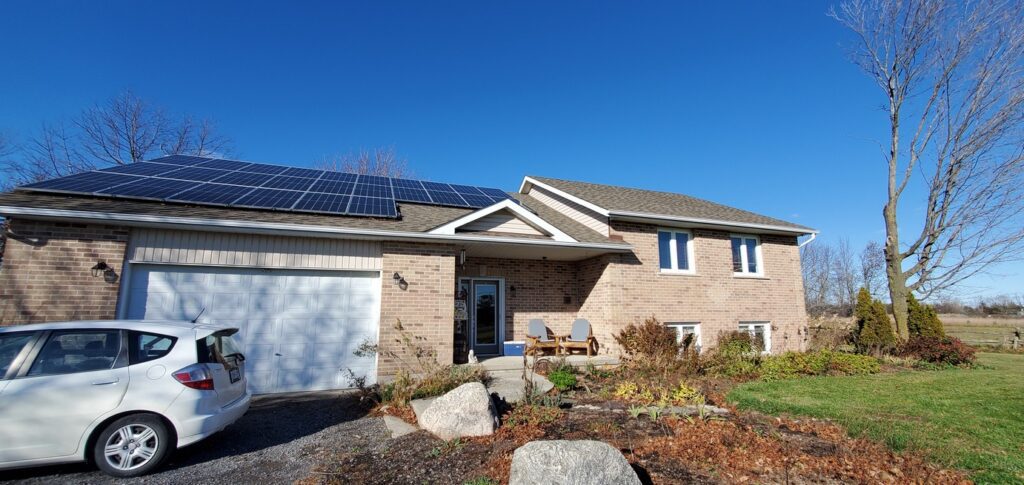
The installation of solar PV panels.
Quantum installed the 12kW solar panels to their sunny roof at the end of March 2022. The net-metering was set up by the utility two months later in June 2022 because of some delays.
After the solar panels were installed, the couple was able to track solar productivity in real time on the Solar Edge app on their phones.
As for swapping out their over 20-year-old propane furnace for a heat pump, the couple was thinking of waiting because the furnace was still working fine. That was the plan until Diana received an inheritance from her father and they changed their mind.
Wyatt did some research and found out from her sister Eve that Mitsubishi heat pumps are popular in Toronto. The couple faced some challenges finding someone to install the system. But eventually, Wyatt found a small HVAC contractor in Yarker, a small town nearby, who installs Mitsubishi Zuba cold-climate air-source heat pumps.
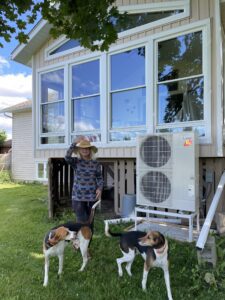
Wyatt with their two dogs enjoying a quiet afternoon next to the quieter heat pump.
Although the house didn’t need an electrical panel upgrade to install the heat pump, the wiring from the heat pump to the panel, and from the outdoor to the indoor unit needed improvement. The electrical wiring upgrades cost the couple $1,000 and about half of that was for wiring from the outdoor to the indoor unit.
Wyatt and Campbell also switched to an electric water heater from their propane one. They are yet to switch away from their propane dryer as they’re waiting to get a better sense of how their solar system will cover the electrical load.
The very last thing in the retrofit project was to fix two leaky spots that Red Squirrel identified in the first evaluation, which only took Campbell 20 minutes to complete.
The retrofit project was completed in November 2022.
Red Squirrel’s post-retrofit energy evaluation showed the home went from consuming 119 GJ of energy per year — slightly more than a comparable new house’s consumption of 87 GJ — to just 19 GJ a year!
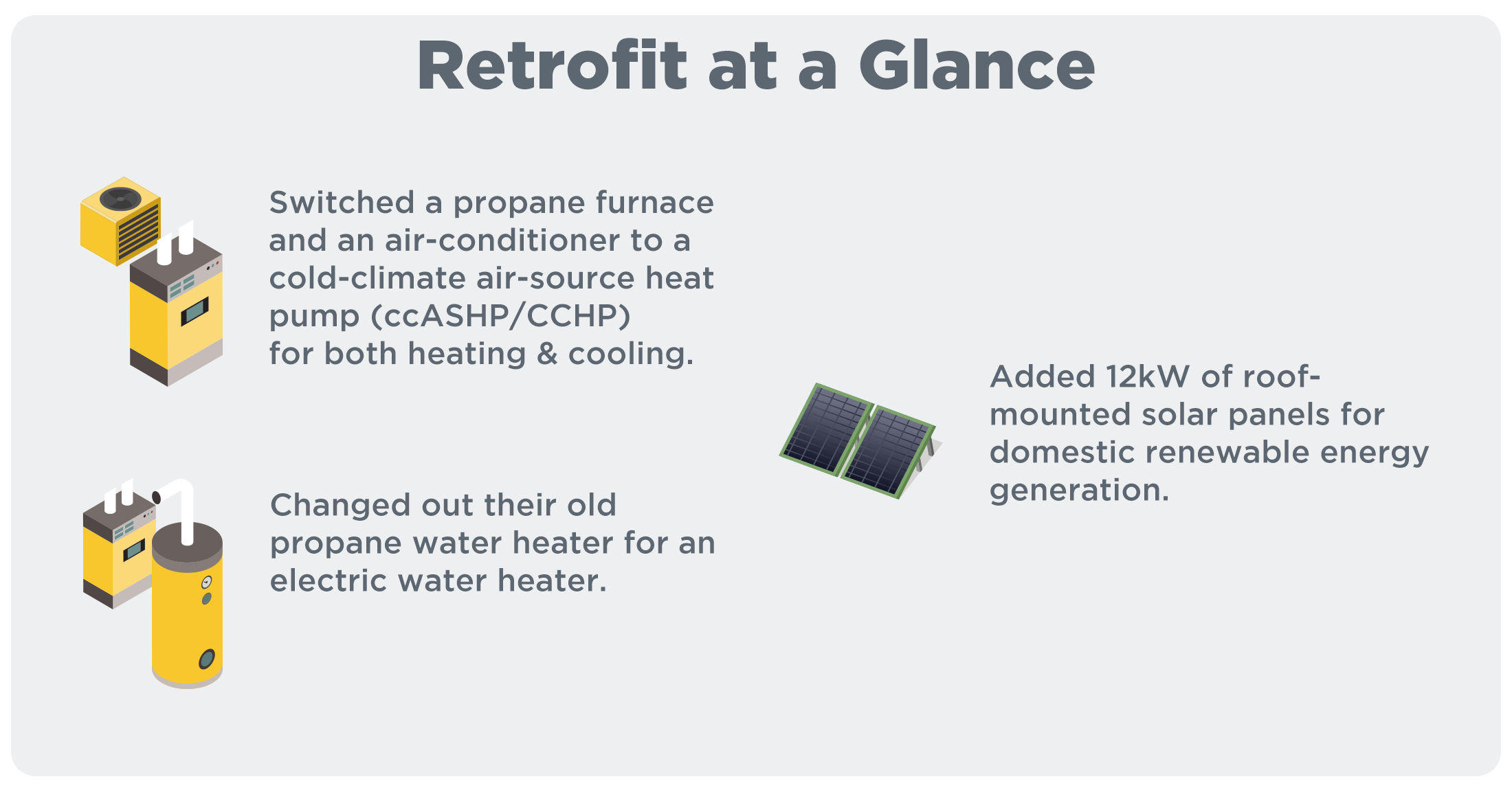
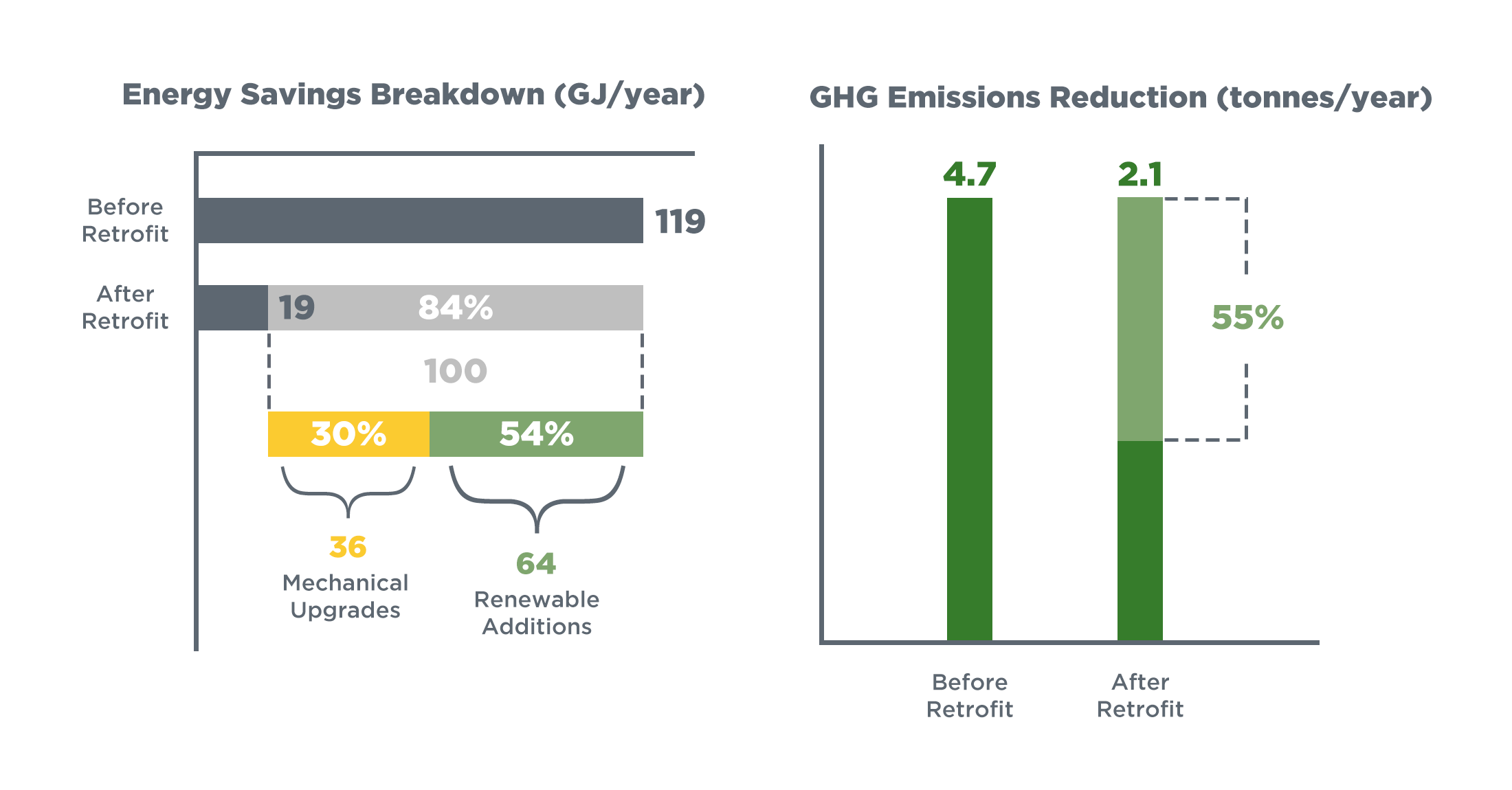
The Retrofit’s Benefits
After the deep energy retrofit, the residents noticed the air smelled a lot fresher in their home. During the retrofit, contractors removed mouse nests from the propane furnace and air conditioner, which likely resulted in the improved indoor air quality.
Another noticeable change was the noise level: the loud roar of the air conditioner fan had been replaced by the quieter whirring of the heat pump fan.
Wyatt also noted that the back-up heater didn’t come on much, preventing their electricity bill from going through the roof. The homeowner was happy at how the system kept them comfortable even on the coldest days of the year.
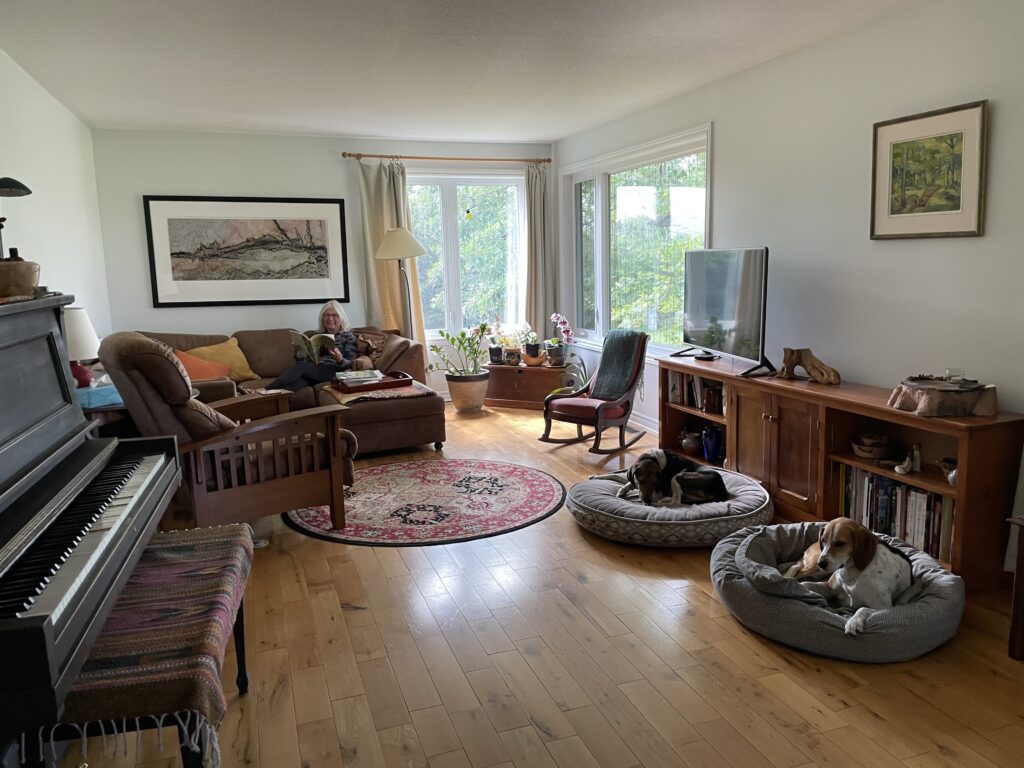
Wyatt enjoying sustainable home energy comfort with the family pups.
“Given how well the (heat pump) system works, and how desirable it is, I found it somewhat bizarre that HVAC installers aren’t jumping at the chance to find out more about heat-pumps. They’re a better product! All furnaces are going to eventually become obsolete. People have a presumption that if you’re doing something for the environment, you’re giving up something. That is not the case with a heat-pump — it’s more efficient and works better,” said Wyatt.
Financial Incentives and Climate Goals
Wyatt and Campbell’s propane bills have dropped from over $220 to $90 a month. It is not completely zero because they are still paying to supply their propane clothes dryer.
As for their hydro bills, without solar credits, they are now paying $200-$250 a month while those will drop down to $40 a month once solar credits are available. The Canada Greener Homes Grant covered $5,000, a little under 10 per cent of the total retrofit cost.
Since their project, the Canada Greener Homes Loan has launched which provides up to $40,000 of zero-interest financing to help fund deep home energy retrofit projects. Better Homes Kingston also launched their own no-interest home energy loan program that also provides a performance-based bonus of up to $5,000.
“We grew up in a family where social responsibility was very important and one of the central principles was that we should leave the world better than we found it. When thinking about the world, it would always be an issue of how you can use what you’ve got, efficiently,” Wyatt said of her passionate motivations for undertaking the project.
Retrofit Summary



Technical Details
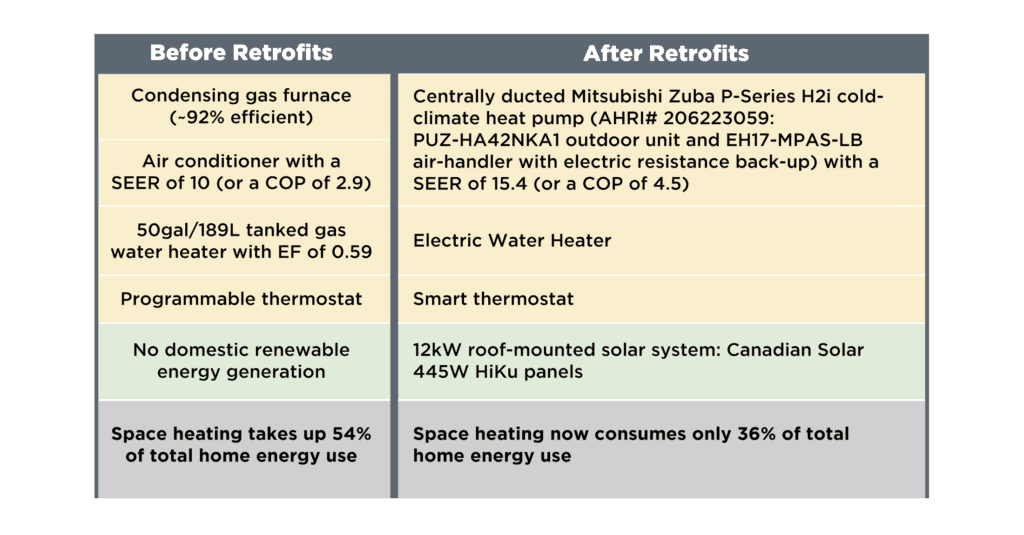
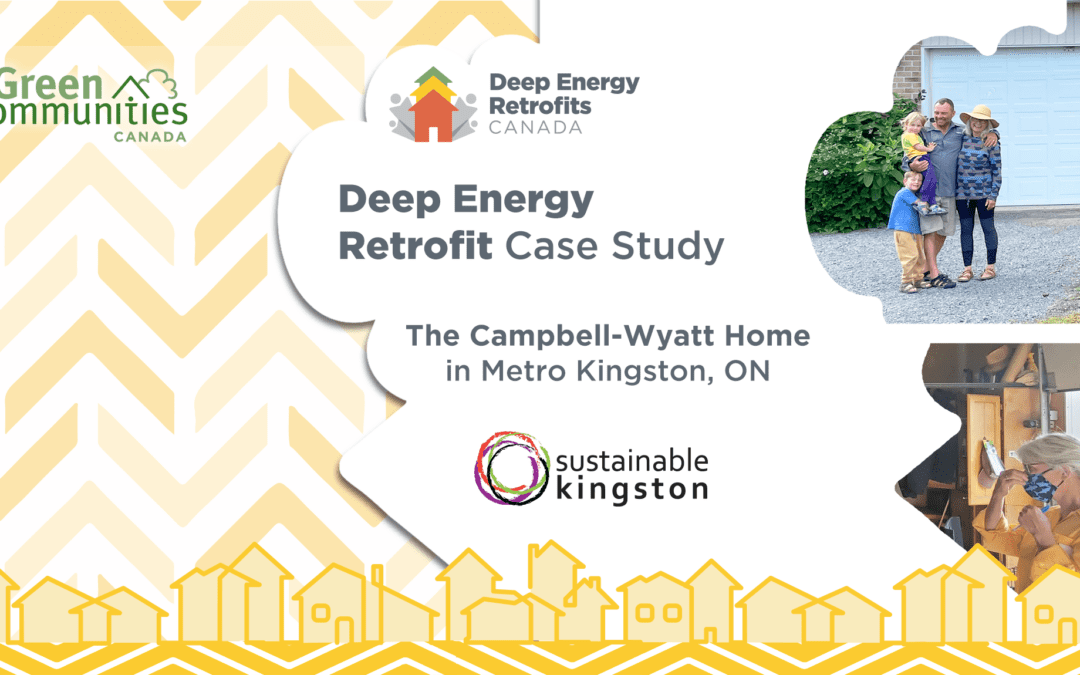
Recent Comments